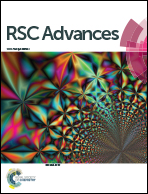Characterization of electrical surface properties of mono- and co-cultures of Pseudomonas aeruginosa and methicillin-resistant Staphylococcus aureus using Kelvin probe force microscopy
Abstract
Microbial attachment is the first and only reversible step in biofilm formation and the physical attributes of the substrate surface play a crucial role in the attachment process. Medically relevant surfaces such as clean stainless steel and gold surfaces exhibit negative surface potentials and inhibit microbial attachment. Poly-L-lysine functionalized surfaces have positive surface potentials and promote the rapid attachment of microbes after 30 minutes. KPFM analyses revealed that the cell surface potentials for all species (Pseudomonas aeruginosa and MRSA) and culture conditions were affected by the type of substrate used. Co-culturing in vitro, which mimics the in vivo situation, is a critical factor determining the observed shifts in surface potential for MRSA, significantly affecting its cellular activity. Selective plating experiments further confirmed the growth inhibition of MRSA in the presence of P. aeruginosa. Under KPFM measurement conditions it was revealed that both microbial species show positive cell surface potentials, with the exception of MRSA on the gold surface. No morphological changes were observed in both mono and co-cultured P. aeruginosa and MRSA as observed by atomic force microscopy. Zeta potential measurements on cultures revealed negative zeta values. This study provides an insight into the electrokinetic dynamics of surfaces and their consequence on the attachment of virulent bacteria. The study further highlights the importance of physical attributes such as surface charge, that could be exploited for the development of therapies involving nanocoatings or electrical fields in order to prevent microbial attachment and the formation of recalcitrant wound biofilms.


 Please wait while we load your content...
Please wait while we load your content...